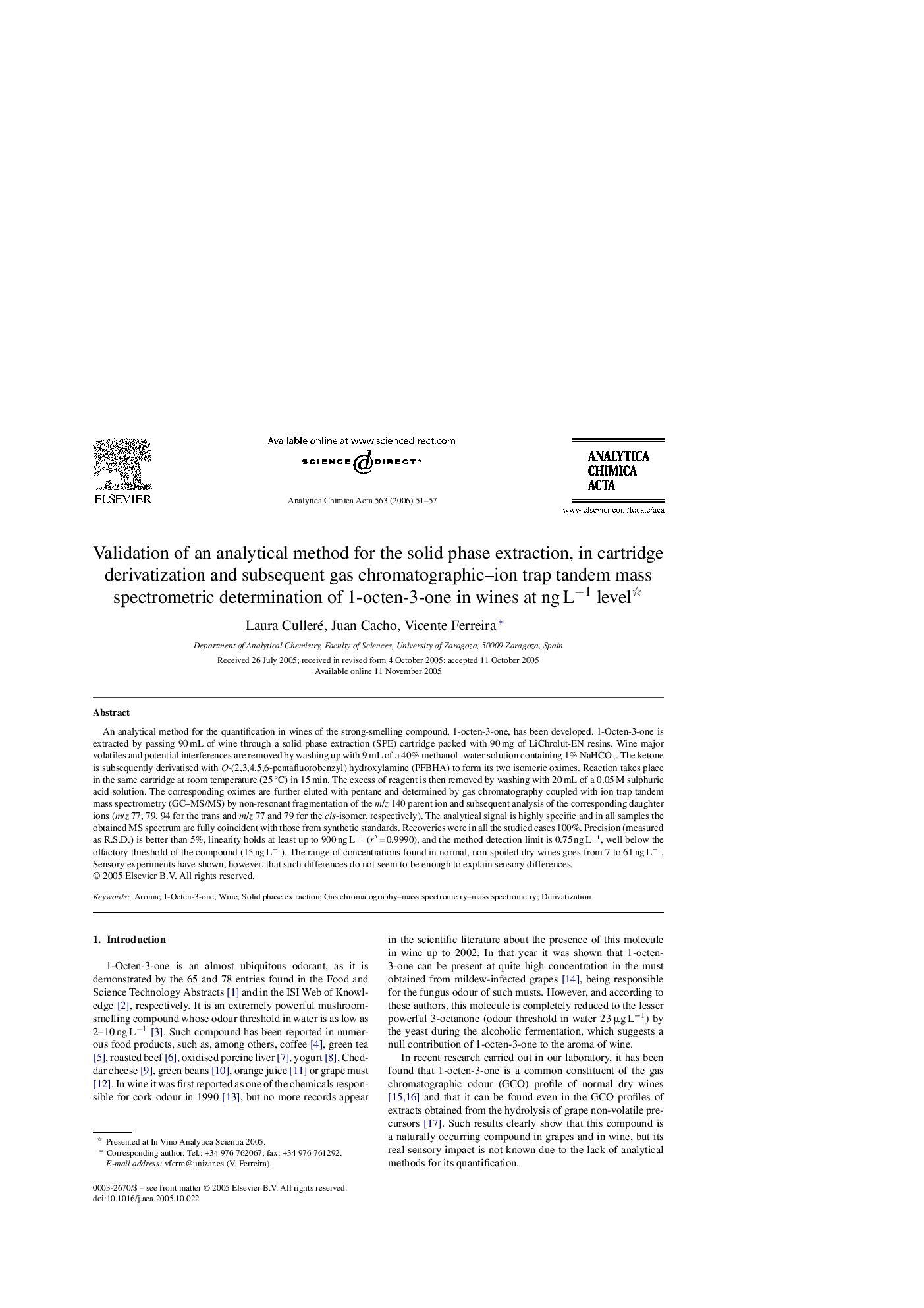| کد مقاله | کد نشریه | سال انتشار | مقاله انگلیسی | نسخه تمام متن |
|---|---|---|---|---|
| 1171615 | 1491181 | 2006 | 7 صفحه PDF | دانلود رایگان |

An analytical method for the quantification in wines of the strong-smelling compound, 1-octen-3-one, has been developed. 1-Octen-3-one is extracted by passing 90 mL of wine through a solid phase extraction (SPE) cartridge packed with 90 mg of LiChrolut-EN resins. Wine major volatiles and potential interferences are removed by washing up with 9 mL of a 40% methanol–water solution containing 1% NaHCO3. The ketone is subsequently derivatised with O-(2,3,4,5,6-pentafluorobenzyl) hydroxylamine (PFBHA) to form its two isomeric oximes. Reaction takes place in the same cartridge at room temperature (25 °C) in 15 min. The excess of reagent is then removed by washing with 20 mL of a 0.05 M sulphuric acid solution. The corresponding oximes are further eluted with pentane and determined by gas chromatography coupled with ion trap tandem mass spectrometry (GC–MS/MS) by non-resonant fragmentation of the m/z 140 parent ion and subsequent analysis of the corresponding daughter ions (m/z 77, 79, 94 for the trans and m/z 77 and 79 for the cis-isomer, respectively). The analytical signal is highly specific and in all samples the obtained MS spectrum are fully coincident with those from synthetic standards. Recoveries were in all the studied cases 100%. Precision (measured as R.S.D.) is better than 5%, linearity holds at least up to 900 ng L−1 (r2 = 0.9990), and the method detection limit is 0.75 ng L−1, well below the olfactory threshold of the compound (15 ng L−1). The range of concentrations found in normal, non-spoiled dry wines goes from 7 to 61 ng L−1. Sensory experiments have shown, however, that such differences do not seem to be enough to explain sensory differences.
Journal: Analytica Chimica Acta - Volume 563, Issues 1–2, 23 March 2006, Pages 51–57